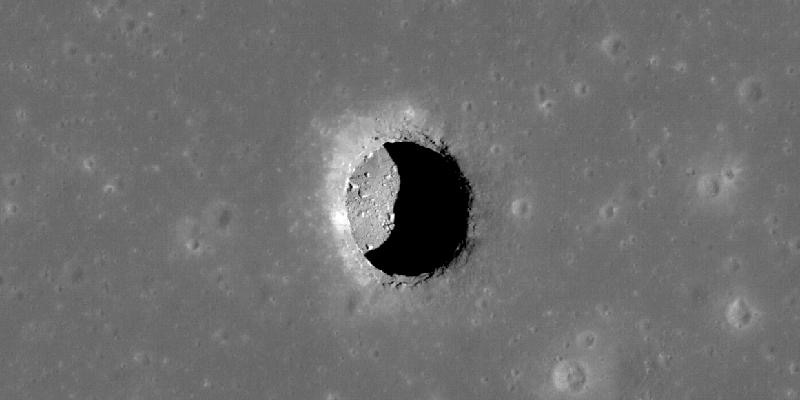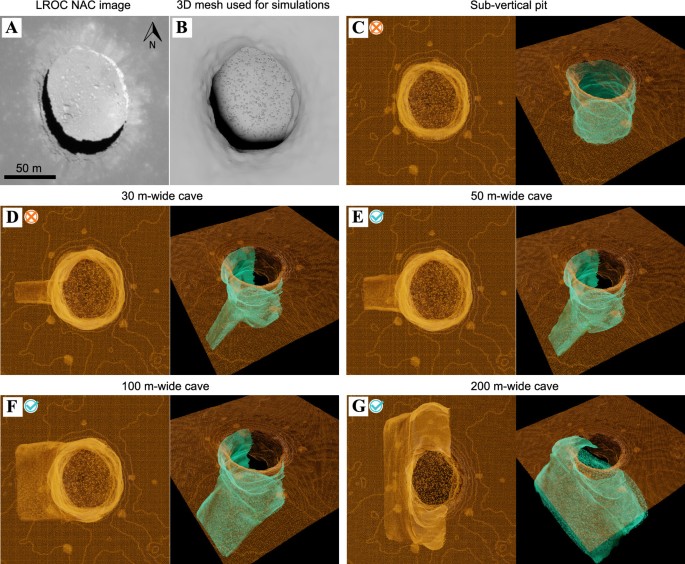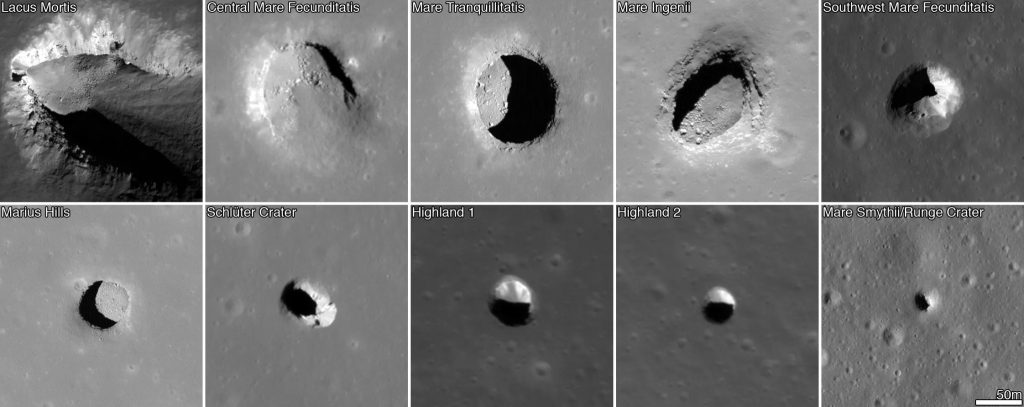
Researchers Lorenzo Bruzzone and Leonardo Carrer, from the University of Trento in Italy, have identified evidence of a significant lunar cave by reanalyzing data from advanced radar technology collected more than a decade ago. Located in Mare Tranquillitatis, the region of the Apollo 11 landing, this discovery reveals critical insights into the Moon‘s subsurface structure.
The potential cave, located nearly 400 kilometers northeast of the Apollo 11 landing site, has vertical walls, sloping floors, and is believed to have formed from ancient lava flows. These flows likely created a tunnel or “tubes,” much like volcanic caves on Earth and reportedly reaches depths of at least 100 meters, suggesting it could potentially host a human outpost due to its protection from the Moon’s harsh surface conditions.
The international research team used observations that originated from radar data collected in 2010 by an instrument on NASA‘s Lunar Reconnaissance Orbiter called Mini-RF, or Miniature Radio-Frequency. As it passed over the Sea of Tranquillity, the orbiter imaged a “pit” that was first discovered by the Japanese Kaguya orbiter in 2009. It was suspected that it was a collapsed section of a lava tube. Many more similar pits have been imaged around the Moon.

Years later, Bruzzone and Carrer reanalyzed the Lunar Reconnaissance Orbiter’s data using newly developed signal processing techniques. Their findings revealed radar reflections consistent with an underground cave conduit, providing the first direct evidence of an accessible lava tube beneath the Moon’s surface.
“Now the analysis of the Mini-RF radar data tells us how far these caves might extend,” Noah Petro, Lunar Reconnaissance Orbiter project scientist based at NASA’s Goddard Space Flight Center in Greenbelt, Maryland, said in a NASA news release about the study.
In the news release, NASA said the data suggests the cave extends more than 60 meters from the base of the pit. Its full extent is unknown, “but it could stretch for miles beneath the mare.”
The hypothesis of lunar caves has been discussed since the mid-20th century, with the Lunar Reconnaissance Orbiter imaging many potential cave entrances starting in 2010. However, the depth and stability of these formations remained speculative until Bruzzone and Carrer’s research provided a clearer understanding of these subsurface environments.

While high-resolution surface imaging has enabled precise mapping of lunar features, the subsurface remains largely unexplored, presenting opportunities for future discoveries. This research aims to advance our understanding of the Moon and pave the way for exploring Martian caves, which may hold clues to past life sheltered from surface conditions.
Establishing a permanent human settlement on the Moon requires strategies to mitigate cosmic radiation, temperature fluctuations, and space weather phenomena. A lunar cave could potentially provide a stable environment shielded from these harsh conditions.
Moreover, caves may hold potential for answering other celestial fundamental scientific questions. Protected from space weathering, the rocks within these structures could provide a pristine geological record spanning billions of years. Analyzing samples in the future may contribute insights into the Moon’s volcanic activity, thermal evolution providing broader implications for our understanding of the solar system.
FTC: We use income earning auto affiliate links. More.



Comments